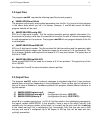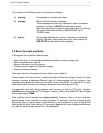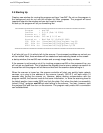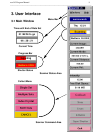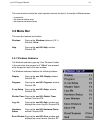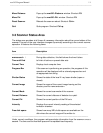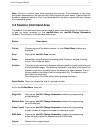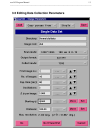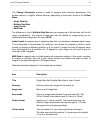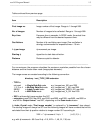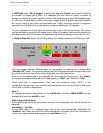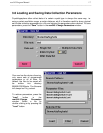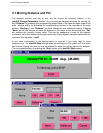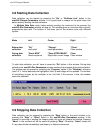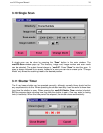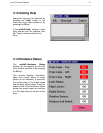m
ar345 Program Manual 1 4
_
____________________________________________________________________________________
_
The Change Parameters window is used to program data collection parameters. Th
e
window comes in 4 slightly different flavours, depending on the button choice in the Colle
ct
M
enu:
− Single Data Set
− Multiple Data Sets
− Index Crystal
−
MAD Data
The difference is, that in Multiple Data Sets one can program up to 64 data sets with the fu
ll
range of parameters. The amount of data sets that are offered for programming can b
e
controlled by the configuration file (entry SETS).
I
ndex Crystal is a special way of collecting data with a ϕ movement inbetween each image
.
This ϕ movement is denominated "ϕ increment" and serves the purpose to collect a sma
ll
number of images at different positions in ϕ.To collect 2 images that are 90 degrees awa
y
from eachother with a ϕ oscillation of 1.0 degree for each image one will have to give a
n
increment of 89.0 degrees.
M
AD Data is a special way of collecting data with anomalous signals. In this mode, a numbe
r
of images is collected, then the ϕ axis moves forward and collects the same number o
f
images in the equivalent position 180 degrees away.
Otherwise the items displayed in the window are as follows:
_______________________________________________________________________
I
tem Description
________________________________________________________________________
T
itle Single Data Set, Multiple Data Sets or Index Crystal.
D
irectory Directory where the images will be written to.
I
mage root Name root of image files.
S
can mode Choice of image plate diameter to be scanned (345, 300,
240 or 180mm) and pixelsize used (0.1mm or 0.15mm)
O
utput format Usually only 1 choice: mar345. This format features a very
efficient image compression that requires approx. 70% less
disk space than uncompressed data.
C
ollect mode Time controlled or X−ray dose controlled ϕ movement.
The latter one should be used on X−ray sources with variable
X−ray flux (synchrotrons).
________________________________________________________________________



